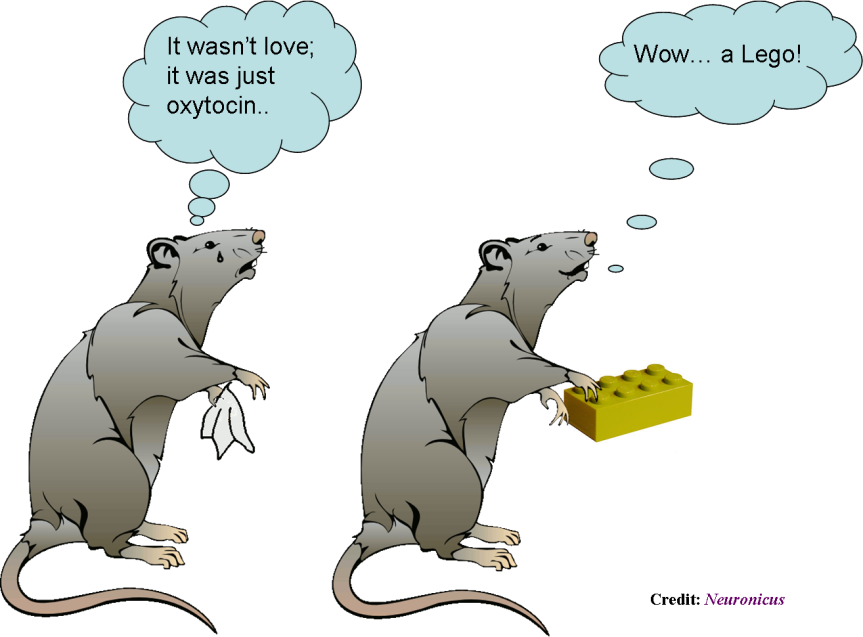
Over the past five years or so, dopamine stepped down from the role of the “love molecule” in favor of oxytocin, a hormone previously known mostly for its crucial role in pregnancy, labor, delivery, lactation, and breastfeeding. Since some interesting discoveries in monogamous vs. polygamous voles (a type of rodent) pointing to oxytocin as essential for bonding, many studies implicated the chemical in all sorts of behaviors, from autistic to trusting, from generosity to wound healing.
Nakajima, Görlich, & Heintz (2015) add to that body of knowledge by finding that only a small group of cells in the medial prefrontal cortex express oxytocin receptors: a subpopulation of somatostatin cortical interneurons. Moreover, these neurons are gender dimorphic, meaning they differ from male to female: the female ones have twice as many action potentials upon application of oxytocin as compared to male’s.
And here is the more interesting part:
– Females in the sexually receptive phase of their estrus whose oxytocin neurons were silenced preferred to interact with a Lego brick over a male mouse (which, as you might have guessed, in not what they typically choose).
– Females that were not in their sexually receptive phase when their oxytocin neurons were silenced still preferred to interact with a mouse (male or female) over the Lego brick.
– Silencing of other neurons had no effect on their choice.
– Silencing had no effect on the males.
Hm… there are such things out there as oxytocin inter-nasal sprays… How soon do you think until the homeopaths, naturopaths, and other charlatans market oxytocin as a potent aphrodisiac? And it will take some deaths until the slow machine of beaurocracy turns its wheels and tightens the regulations on the accessibility to the hormone. Until then… as the cartoons say, don’t try this at home! Go buy some flowers or something for your intended one… it would work better, trust me on this.
Reference: Nakajima M, Görlich A, & Heintz N (9 October 2014). Oxytocin modulates female sociosexual behavior through a specific class of prefrontal cortical interneurons. Cell. 159(2): 295–305. doi:10.1016/j.cell.2014.09.020. Article | FREE FULLTEXT PDF
By Neuronicus, 23 October 2015




